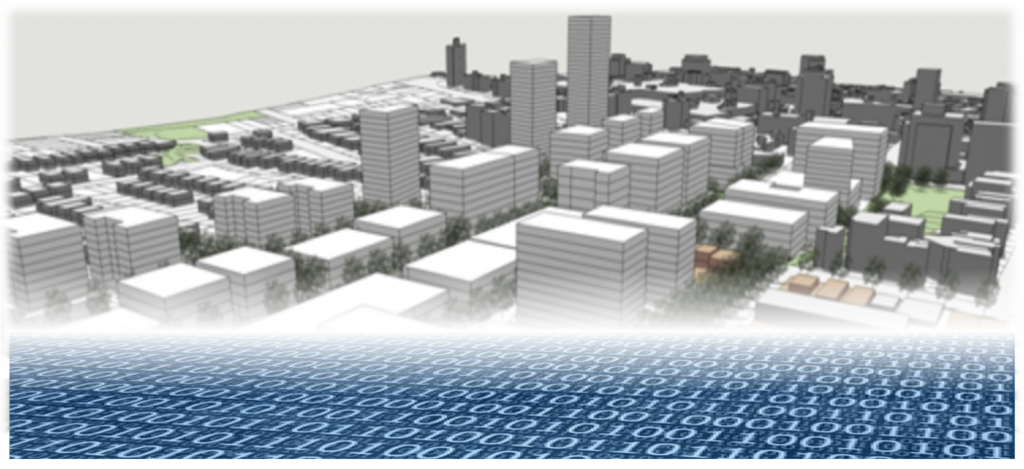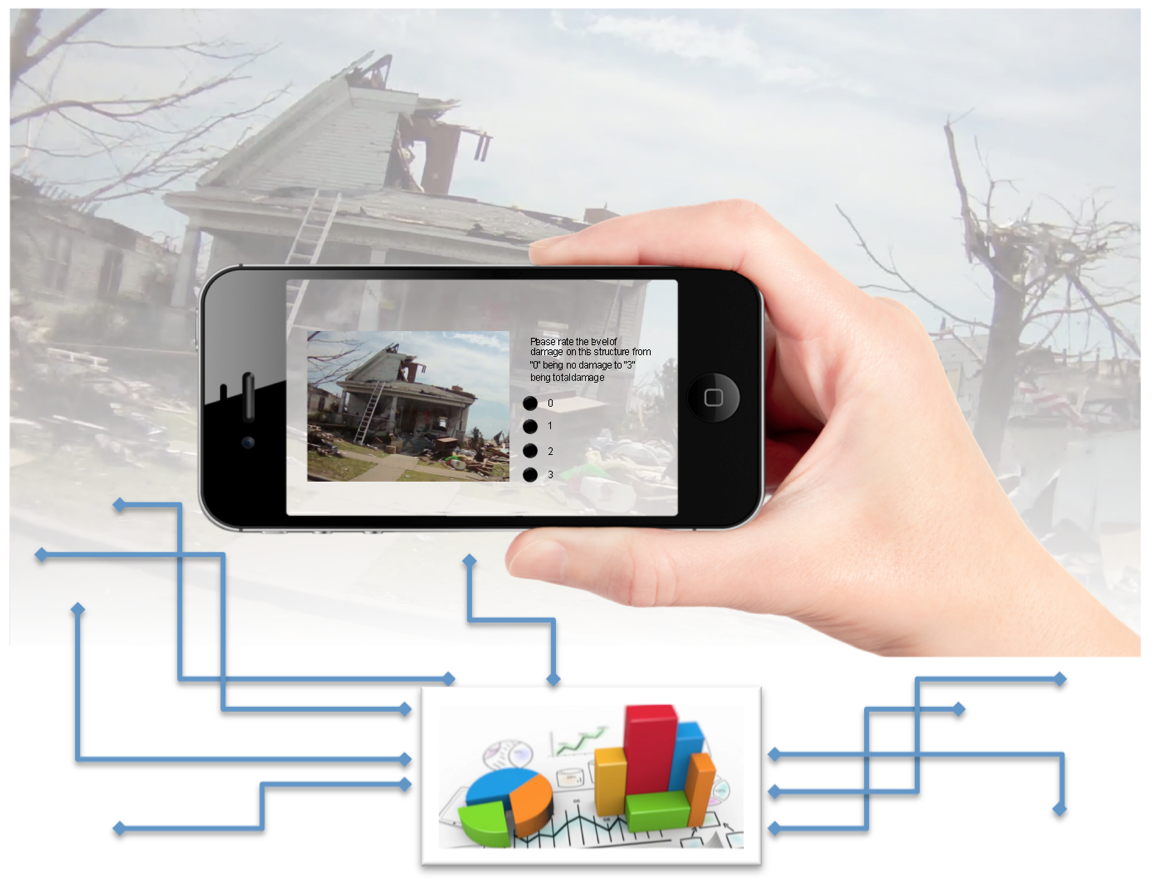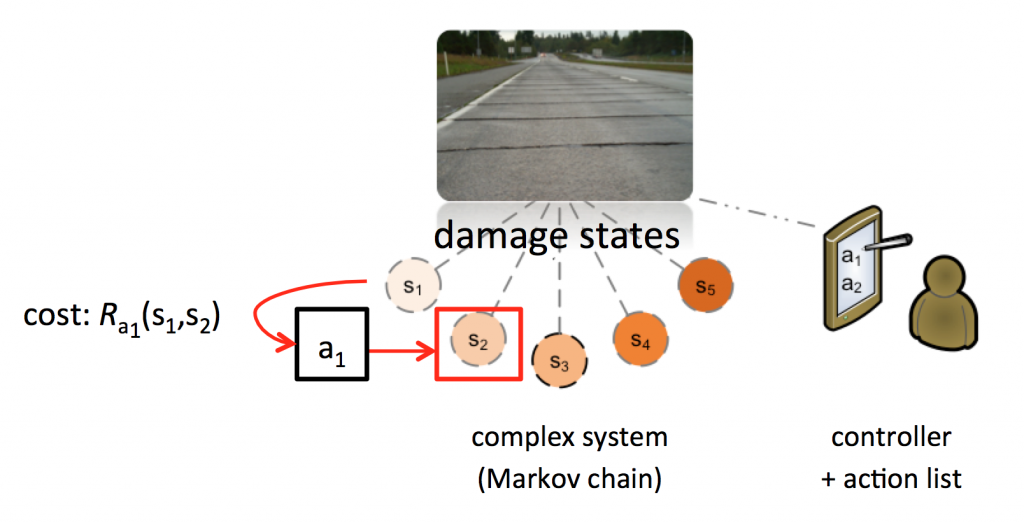- How to build fast and accurate software tools for uncertainty analysis of complex systems?
- How to calibrate and validate our computational models?
- How to exploit streaming sensor data in updating these models?
- How to support uncertainty-informed decision making?
Ongoing Projects:
1. Predictive Modeling for Connected and Autonomous Vehicles (Funded by USDOT)
2. Robust Data-driven Modeling for Wireless Sensor Networks: Application on Traffic Sensors in California (Funded by USDOT and NSF)
3. Interdependent Energy-Transportation Systems (Funded by NSF)
4. Statistical Analysis of Quality Control Procedures for Infrastructures (Funded by IDOT)
5. Citizen Science EAGER: Quantifying Uncertainty in Crowd Response for Reliable Wind Hazard and Damage Assessment (Funded by NSF)
Damage to infrastructure arising from windstorms exceeds damage from any other natural hazard in the U.S. Ubiquitous smartphone and internet availability, widespread use and rapid dissemination of social media, the power of crowds engaged in scientific endeavors, and the public’s awareness of vulnerabilities point to a paradigm shift in sensing hazards in general. In the case of windstorm damage, on-the-ground data retrieved and shared by Citizen Science public participation may provide windstorm data previously unavailable. The primary focus of this EArly-concept Grant for Exploratory Research (EAGER) award is to study “human-sensor” data collected through Amazon Mechanical Turk– a crowd sourcing application. This project will address two key questions: How can one quantify the confidence in crowdsourced damage assessment? How can one design a tool for more reliable crowdsourcing given unreliable participants?
Past Projects:
1. Data-driven Predictive Modeling of Track Geometry Defects (Funded by Association of American Railroads (AAR))
Condition monitoring of track geometry is essential in ensuring the safety of railways. If geometric characteristics deviate from a limit value, train speed on the track must be reduced and the defect corrected. The data from track geometry measurement systems over time provides a wealth of information that can be used in a statistical model to predict future degradation of the track conditions. Such reliable data-driven prediction can in turn improve immediate and long-term maintenance planning. The objective in this project is to construct a data-driven predictive model that is automated, i.e. it can classify each defect type into an optimal number of condition states, based on their severity. Using this model, future track conditions will be predicted with quantified confidence, allowing for a more economical risk-informed decision support systems for maintenance planning.
2. Model Selection for Molecular Systems using Bayesian Formalism
In model building process, observation data is exploited for calibration and validation purposes. In calibration, we search for the parameter values that most closely explain the observed noisy data. As an example, in a recent collaboration with material scientists, it was demonstrated how the plausibility of different coarse-grained models are quantified, and how predictions can be made exploiting an ensemble of these models. A Bayesian model ranking framework quantified the capability of three water models in predicting different bulk properties. The use of surrogates in the calibration and simulation of these models were highlighted and an illustrative example showed how an ensemble of two surrogates outperforms individual surrogates when the accuracy of prediction is concerned.
 Deterministic calibration of coarse-grained models using surrogates
Deterministic calibration of coarse-grained models using surrogates
 Bayesian calibration of coarse-grained models using surrogates
Bayesian calibration of coarse-grained models using surrogates
3. Uncertainty representation and robust decision making for deterioration modeling and maintenance of roadway pavement
If limited information is available about a random quantity, such as model parameter, the principle of maximum entropy can be used to find the upper-bound uncertainty model that conforms to the available information. An example of this task can be found in here, where transition probabilities that parameterize Markov chains were considered to be random. Uncertainties in these parameters can be associated with insufficient data or with inherent fluctuations in the environment through which a chain evolves.
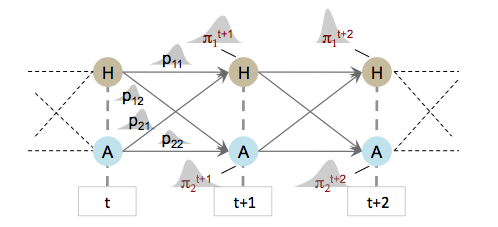
Markov chain with random transition probabilities
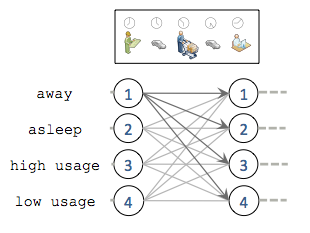
An activity-based Markov chain model for energy demand
The optimal maintenance of infrastructure incorporating life-cycle costs has seen rapid progress using methods, such as Markov Decision Processes, that permit the integration of stochasticity in decisions related to sustainable infrastructure management. In this project, the uncertainty in the transition parameters of Markov Decision Processed was and quantified using Maximum Entropy principle and its implication on the optimal decisions were studied. A computationally efficient solution algorithm is also introduced for the stochastic optimization problem under proposed transition uncertainties. For more details, see here.
Schematic of a 5-state 2-action Markov Decision Process for pavement maintenance

